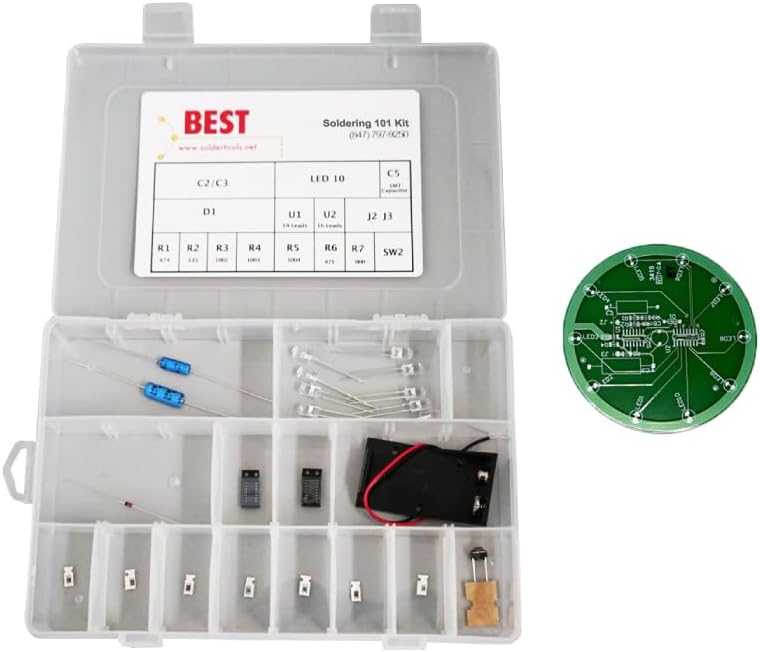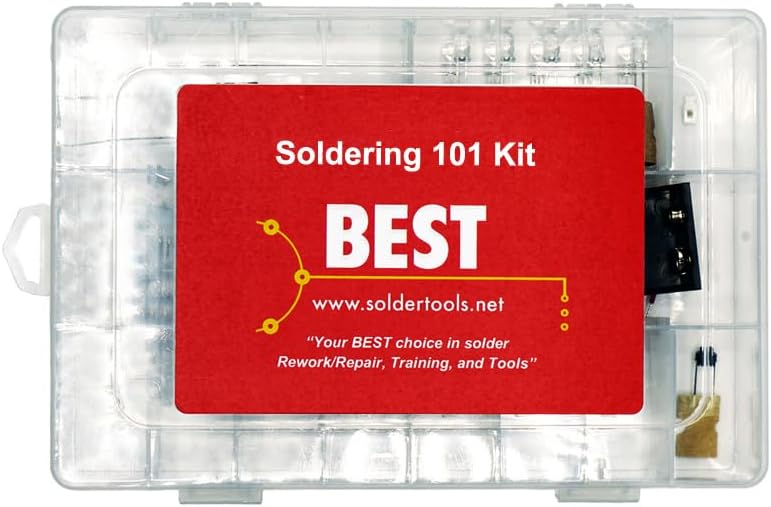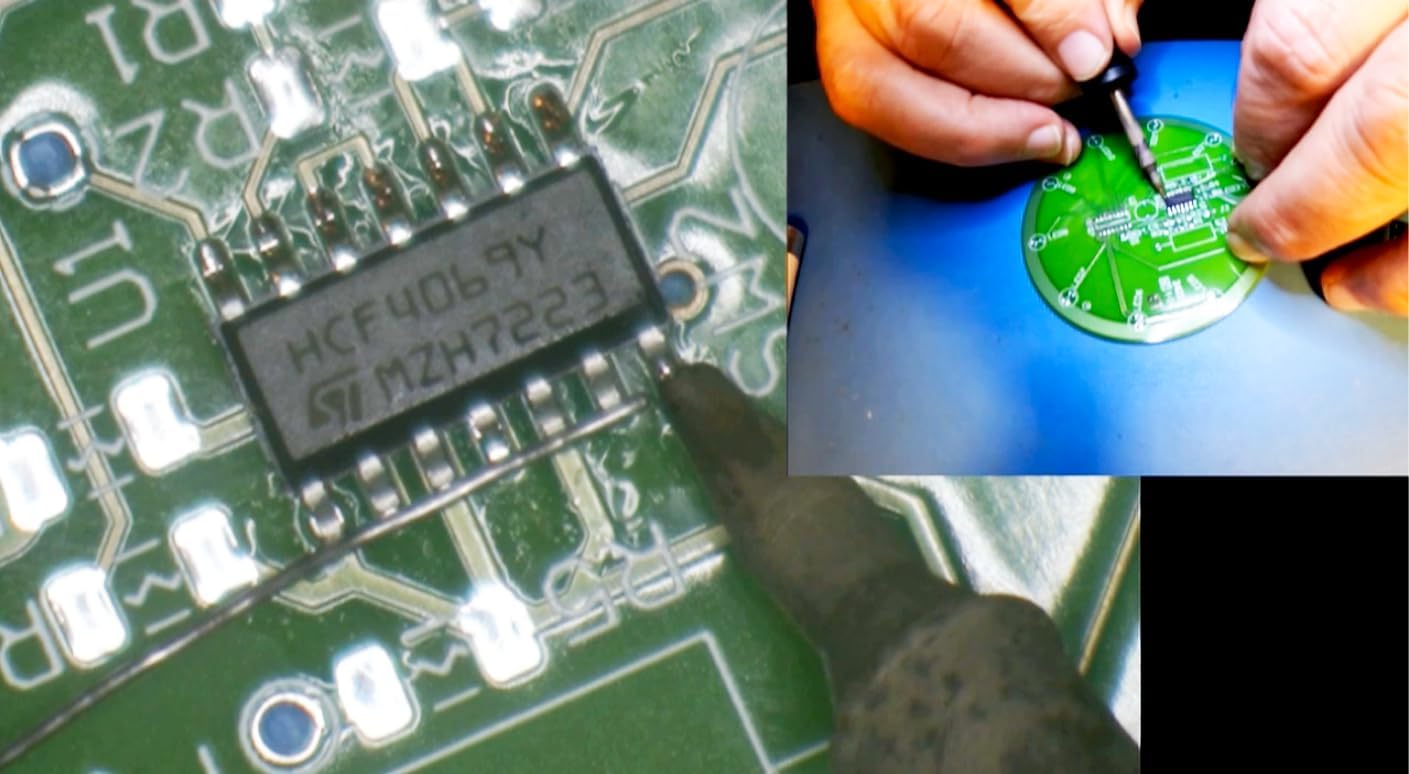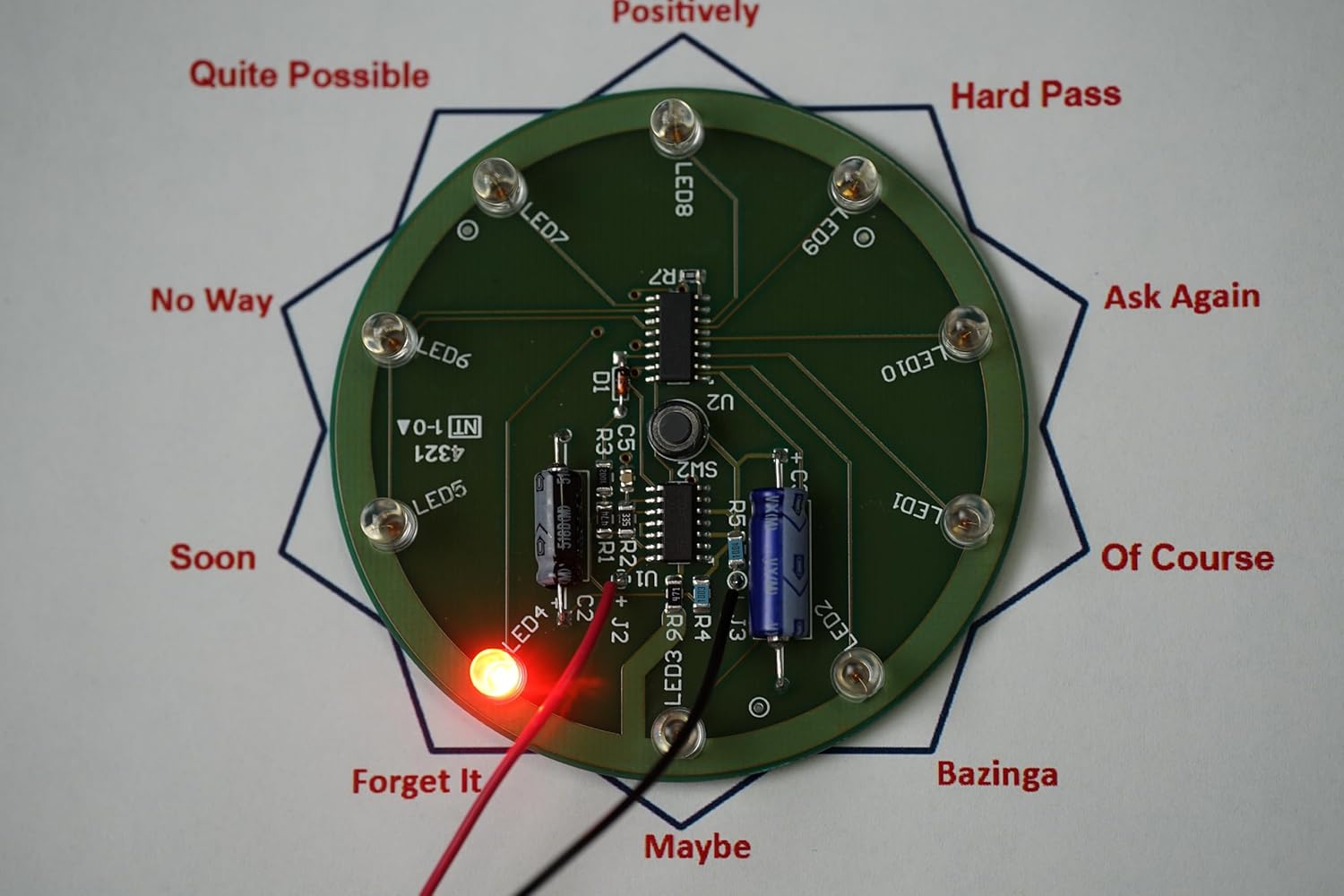Shop
- PCB Repair
- Products
- Luxury sofa
- Soldering 101 Kit – DIY Soldering Practice Kit SMD/SMT Components Through-hole Components Beginner Intermediate Skill Training Board
Description
Price: $34.99
(as of Dec 15, 2024 19:20:44 UTC – Details)

The Soldering 101 Kit features both through-hole and surface mount technology components, providing a well-rounded challenge for those at a beginner to intermediate skill level. This kit comes with written instructions and a video walk-through to enhance the learning experience and simplify the assembly process. Due to the size of some of the components, magnification may be required for assembly.
Soldering Kit Contains Both Through-Hole And Surface Mount Components
Designed for beginner to intermediate skill level
Detailed step-by-step instructions and video walk through included
Made in the USA






Brian CurtisDecember 15, 2024
This is a fun, high quality kit.
If you can get past the price tag, I suggest giving this kit a go. It has both SMD and through-hole components. The SMD components are just small enough to challenge you, but spacing and layout make it a pleasant challenge in my opinion. The main reason I deducted one star is the price. It is a premium quality kit, but I feel $40 is a bit high. I could handle $30 without much complaint. At $20 it would be a recommended buy all day long.I would not rate this as a true beginners kit. Having said that, if you have even a little soldering practice you can build this kit (maybe watch a few videos on manually soldering SMT). You will want a proper solder iron tip appropriate for the job (I used a 2mm wedge with ease).The kit components are well laid out in a compartmented plastic case with a label diagram on the lid (nice touch there). Also, these are actually quality components compared to the cheap stuff you normally see in inexpensive kits. The PCB is well laid out with clear silk screen printing. The instructional video is quite detailed and recommended if you’re still new to kit building. The PDF instructions are just fine if you can differentiate components, but no where near as detailed as the video. No complaints with either resource.The PDF instructions have a magic 8-ball type template that you can print out, or just use your imagination. The end result is a random number generator (1-10) that cycles through LEDs before finally settling on a number. This is accomplished with a 4017 decade counter and supporting circuitry. Unfortunately, there is no circuit diagram that I’ve found. This is disappointing as I’d like to explore this circuit more. Being relatively green in this field, I’d have a tough time reverse engineering it.The reason for wanting a circuit diagram is the included power source. The kit includes a 9v battery holder (high quality one, too), which seems a bit high for the task at hand. The 4017 and 4069 ICs both have an operating voltage of 3-15v. I hooked it up to my bench power supply with a multimeter reading current. What I found is it will operate quite well in the 3.6-4.5v range (this is equivalent to 3xAAA or AA cells). It also seems to work just fine in the 3-4.2v range (li ion cell such as an 18650). The circuit also consumes much less power at these voltages as compared to what a 9v driving the circuit uses. Here’s some current figures at different voltages:3x Alkaline cells3.6v = 2.15mA4.5v = 4.1mA1x Li Ion3v = 1.2mA4.2v = 3.25mA9v Alkaline7.2v = 15.7mA9.6v = 30mAAs you can see, power draw is quite higher at 9v levels. Yes, the LEDs are brighter, but I have a feeling they me be driven a bit hard. At least, much more than they need to be. The LEDs are still quite bright at only 3v. At 9v, the LEDs are annoyingly bright.This circuit, as provided, is ripe for some tinkering. I’m going to add a 3 cell alkaline battery holder as well as a USB power input. If I get adventurous, I might go as far as adding a small lithium cell and supporting USB charge circuitry.
Meow CantorDecember 15, 2024
A step above a beginners kit.
If you have some soldering experience, you should be able to build itâwatching a few videos on manual SMT soldering might be helpful. Make sure to use a soldering iron tip suited for the job; I found a 2mm wedge tip worked perfectly. The kit comes in a well-organized plastic case with compartments and a labeled diagram on the lid, which is a nice touch. The components are of good quality, especially compared to the often cheap parts found in budget kits.
Chico Approved ReviewsDecember 15, 2024
Experienced Perspective: Challenging Soldering Kit Review (Not for Beginners)
I purchased this kit to help develop my sonâs soldering skills. Despite expecting a straightforward final product, I was surprised by the complexity of the components, which require a level of skill typically found in micro-soldering. With over 40 years of electronics experience, I found this kit challenging enough to necessitate using my soldering station. Working with surface mount electronics can be enjoyable, but the small component size makes it unsuitable for beginners who only have a basic soldering iron and solder.The assembly process, as demonstrated in the video, demands exceptional eyesight or good magnification, along with a soldering station that offers precise temperature control. Additionally, the kit requires several additional items not included in the package: solder flux, solder 0.15, a stiff brush and solvent for cleaning flux and parts after soldering, tweezers, needle nose pliers, de-soldering wick, small side cutting wire cutter, and a 9-volt battery. (Video demonstration included all components listed, which illustrates an investment beyond most beginners who purchase a simple iron and solder.)While this kit could serve as a valuable introduction to surface mount (SM) or micro-soldering techniques, it is not suitable for electronic beginners. It’s worth noting that the circuit board and components are neatly packaged in a reusable plastic box with removable dividers, which I intend to repurpose for storing fuses and bulbs in my car.Moving forward, based on my experience with this kit, I will carefully examine the components of future soldering kits to ensure they consist of “through hole” components, which are more beginner-friendly.(Pictures included: Component Size, and a picture of a failed solder attempt with “normal” soldering iron.)